Categories
- Argentina
- Chile
- Antarctica
- Easter Island
- Falklands (Malvinas)
- Bolivia
- Peru
- Uruguay
- Paraguay
- Brazil
- Venezuela
- Colombia
- Ecuador
- Galapagos
- Panama
- Costa Rica
- Cuba
- Nicaragua
- Honduras
- El Salvador
- Guatemala
- Belize
- Mexico
- Latin American Xmas
Pages
- Street Art of Buenos Aires
- A week in Buenos Aires
- The Jesuit Missions in South America
- Contact Us
- Map of Central America
- First week in Latin America – October 2009
- Home Page
- Map of South America
Archives
- October 2011 (3)
- September 2011 (9)
- August 2011 (10)
- July 2011 (7)
- June 2011 (6)
- May 2011 (11)
- April 2011 (10)
- March 2011 (4)
- February 2011 (5)
- January 2011 (6)
- December 2010 (6)
- November 2010 (4)
- October 2010 (8)
- September 2010 (5)
- August 2010 (7)
- July 2010 (5)
- June 2010 (6)
- May 2010 (6)
- April 2010 (7)
- March 2010 (6)
- February 2010 (9)
- January 2010 (4)
- December 2009 (8)
- November 2009 (5)
- October 2009 (2)
Campeche to Palenque
06th July 2011
Inside the old city walls of Campeche [9] are neat rows of pastel coloured historical buildings and handsome colonial churches. Over 1000 colonial buildings have been restored. The city was once the Maya settlement of Can Pech before the arrival of the Spanish in 1540. The main square comes alive in the evenings with the cathedral all lit up and bands play while people stroll.
.
The richness and variety of the food amazes us, nothing like the Mexican food we know. The specialty here is Pan de Cazón, grilled shredded baby shark on tortillas covered in a tomato sauce. We opted for Pollo Pibil instead, chicken marinated in tomato, sour oranges and spices and cooked in banana leaves. A special seed, annotte, is used to give it the rich brick colour. For lunch we tried Papadzueles, hard-boiled egg filled tortillas covered in a sauce made from summer squash seeds.
.
We followed the Gulf of Mexico south and then turned inland passing extensive wetlands to reach Villahermosa [10] where relics from the Olmec archaeological site of La Venta are displayed in an outstanding jungle setting. La Venta is 100 kilometres from Villahermosa, but the artefacts were moved here in the 1950´s for preservation. The Olmec civilization, the earliest in Mexico, thrived between 800 BC and 400 BC and left behind colossal carved stone heads displaying African characteristics.
.
Next stop was Palenque [11], located in the north western Maya lowlands, one of the most important archaeological sites in Mesoamerica. From about 100 BC it grew steadily until by 750 AD it had great splendour, some of the most outstanding Mayan buildings and a population of about 8000. The city was abandoned 150 years later (click here for the Maya Exploration Center). We stayed in the nearby town where we liked the Sopa Azteca (soup with a tomato base, smoky chillies, avocado, grilled tortillas and cheese) so much that we had it three times!
.

Part of the Campeche city walls

The colourful streets of Campeche

Campeche Cathedral from the Casa Vieja restaurant

Built by the Jesuits in 1770 - Ex-Templo San José with lighthouse tower

Iglesia San Francisquito

Chicken Pibil
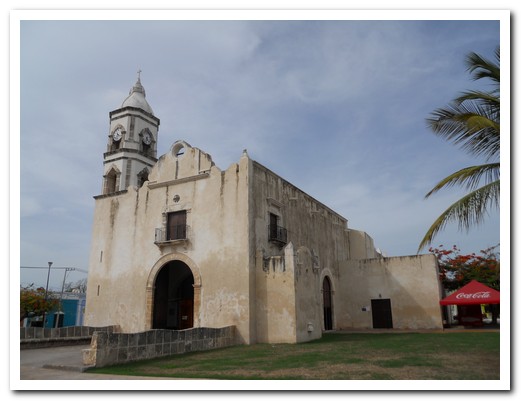
Iglesia San Rámon

Papadzules - tortillas stuffed with egg and covered with a squash seed sauce

Colossal Olmec head, carved between 700 and 400 bc
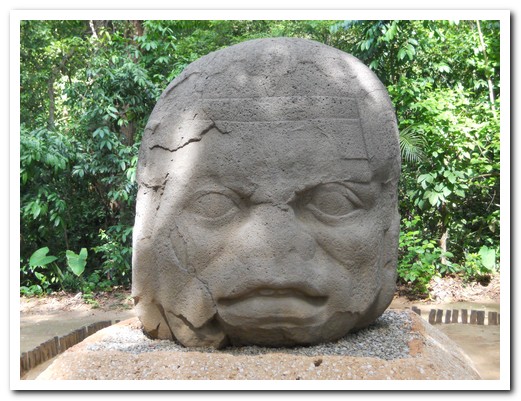
Another huge head, showing teeth
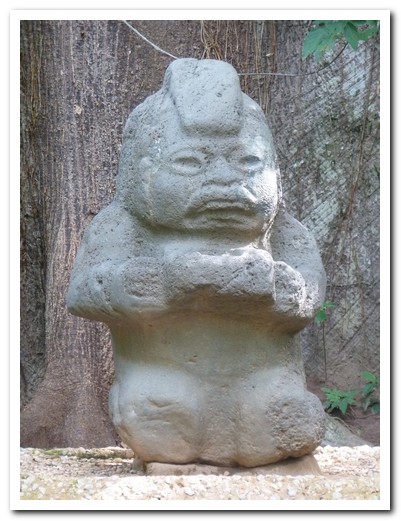
Kneeling figure of a woman holding a plate for an offering

Altar with a figure emerging from the underworld
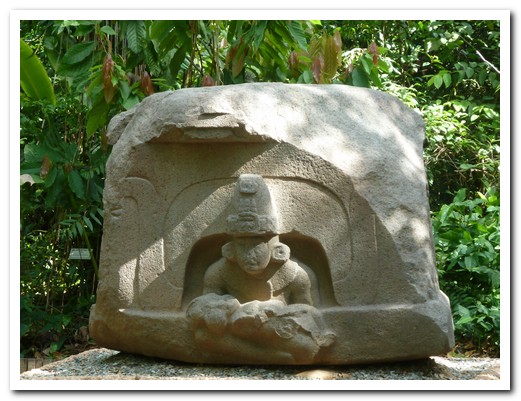
Altar with a figure carrying a child coming out of the underworld

A young goddess - the Olmecs rarely carved women figures

Depiction of a highly important person - called The Governor

Beautiful ceramic figure in the museum
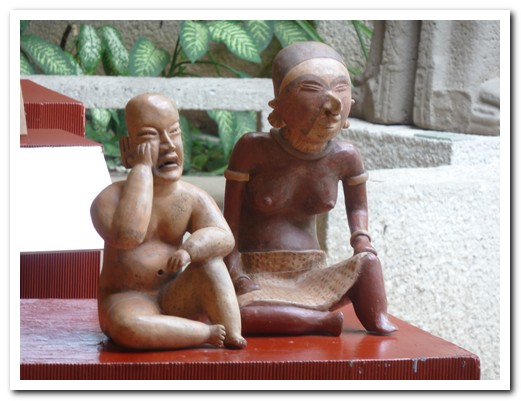
Two ceramic figures
 |
 |
| Two jade funeral masks in the Olmec Museum |
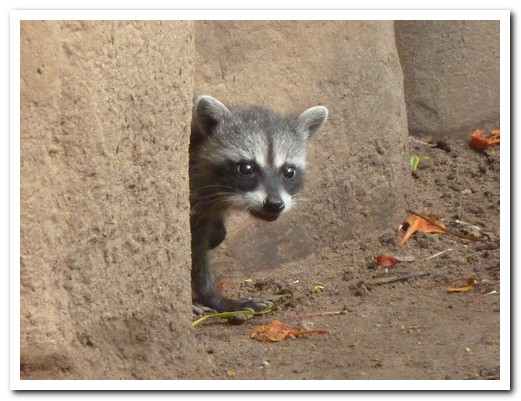
A coati hiding behind basalt columns

Badgers were everywhere in the jungle around the statues

Flowers

Little bird

Sopa Azteca, made with tomato, chilly, avocado, tortillas and cheese

Palenque - the Temple of Inscriptions

The Palace

Stucco carving on the Palace

Carving on the Palace

85 inches of rain a year here - the aqueduct took water under the plaza

Ball court

Temple of the Sun with the best preserved roof comb

Waterfall in the grounds

Panel in the Museum

Carving with traces of colour

Clay incense burner

Clay figure
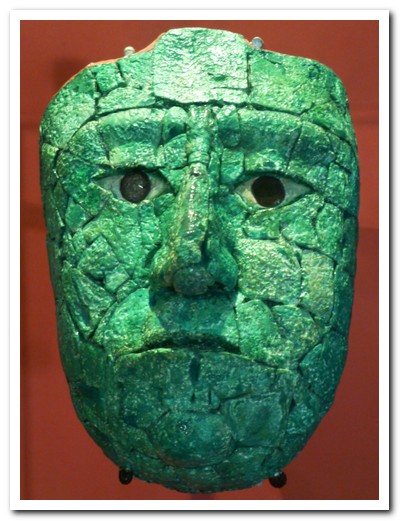
Jade funeral mask
 |
 |
| Heads realistically depict important people |